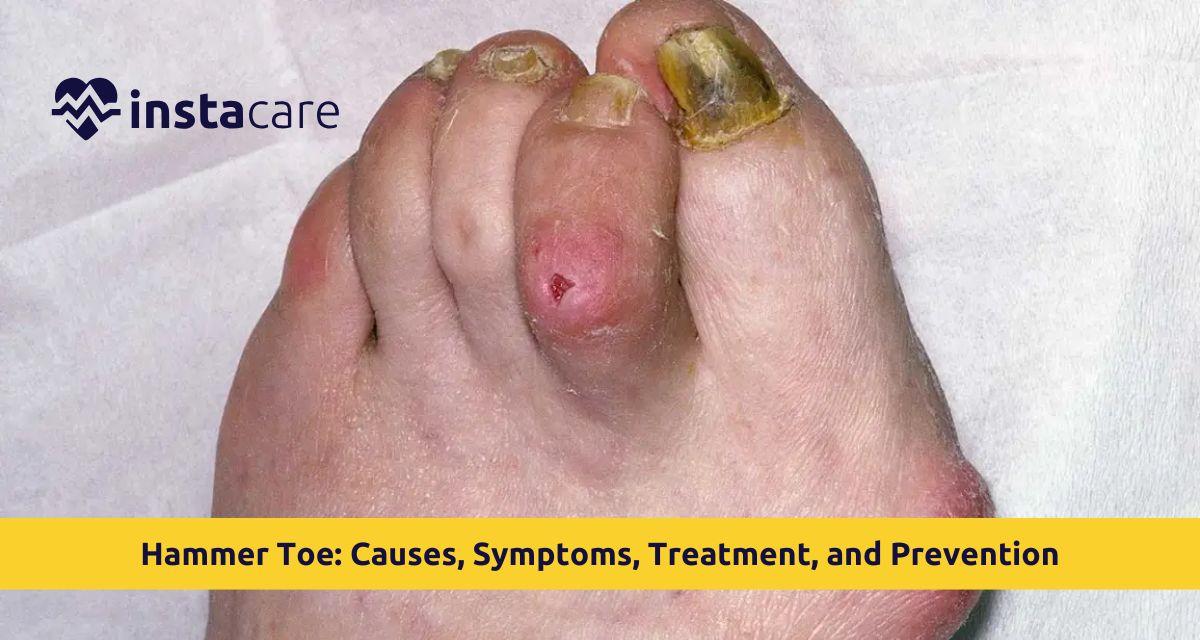What is Hammer Toe?
- Flexible hammer toe: The joint is still flexible. It is the first one and the easiest to treat.
- Rigid hammer toe: The toe becomes rigid and can no longer be pushed, not even with fingers. This one requires surgery most of the time.
Causes of Hammer Toe
- Wrong Shoes: Tight, high-heeled or short shoes force toes together and bend them in an unnatural position. The toes adjust and finally deform to stay in this position.
- Muscles relieve balance: To the toes should stay in place there are muscles and tendons acting as balance at really fine lines. When a group of these muscles slides over another one, it displaces the joint from its neutral position.
- Genetics: Foot type, born from the ancestry of flat feet, high arches, second toes longer than first, predisposes them to hammer toe.
- Arthritis and joint diseases: Osteoarthritis and rheumatoid arthritis or other arthropathies weaken the joints of the toes making them deformable.
- Trauma: The toe either crushes, stabs, or even fractures, displacing the location of the joints, which leads to a hammer toe condition.
- Other Foot Disorders: Bunions, calluses, and corns redistribute foot weight, opening room for hammer toe.
Symptoms of Common Hammer Toe
- "Napping" or downward bowstringing of the toe but correctable
- Minimal pain when clothed
- Corns or callus formation on the dorsal surface of the flexed joint
- Pain of the toe during walking or standing
- Redness, swelling, or inflammation of the toe joint
- Pressure sores on the toe due to shoes incorrect
- Toe cannot be straightened even by hand
- Pain and restricted movement
- Enhanced risk of ulceration, especially in diabetics
Read More: What Causes Swelling On Feet - 7 Causes, Treatments, And Remedies
Diagnosis of Hammer Toe
- Test the toe range of motion in order to know whether it is stiff or flexible or otherwise
- Examine for the presence of ulcers, calluses, or corns that have developed
- Inquire about lifestyle, shoe wear, and background
- Order an X-ray if needed to determine the severity of the deformity
Treatment Modalities of Hammer Toe
Non-Surgical Hammer Toe Repair
- Shoe modification: One can wear one's foot in low-heeled shoes with soft bottoms and broadened toe boxes to ease pressure.
- Orthotics and hammer toe shoes: Orthotics could have been molded to correct the toes and avoid further formation.
- Toe exercise: Toes are kept in good and flexible state with towel scrunches, marble pickup, and toe taps.
- Splints and straps: Splints or straps keep the toe in correct position with caution.
- Medication: Pharmacy anti-inflammatory medications consumed over-the-counter reduce pain and inflammation.
- Padding: Corn pads or cushion guard inner shoes from rubbing.
Surgical Treatment for Hammer Toe
- Tendon release: Incision or transfer of the tendon to reduce tension.
- Joint resection: Bone removal from a segment so the toe is straightened.
- Fusion: Placement of bent bones in the joint of the toe together to straighten the toe.
Prevention Tips of Hammer Toe
- Wear proper shoes: Choose shoes with roomy toe boxes and cushioned insoles. Do not wear tight shoes or shoes that push the toes against the floor.
- Wear high heels sparingly: High heels relocate body weight to the front and stretch the toes. If high heels must be worn, limit heels to less than two inches.
- Do hammer toe exercises regularly: Hammer toe exercises stretch and strengthen the toes to ensure muscle balance.
- Take weight-bearing activity to a normal level: Overweight foot stresses it, speeding joint deformity.
- Examine feet daily: Diabetics and arthritics must examine their feet daily for deformity or ulcer.
- Utilize orthotics, if necessary: Preparative inserts will correct alignment and stabilize long-term.
Hammer Toe and Coping With It
- Wear cushioned insoles to bear down.
- Use socks of a kind that has sufficient ventilation to prevent moisture buildup.
- Soak the feet in warm water to ease soreness and stiffness.
- Note the skin carefully to avoid infection from corn or ulcer.
- Regularly perform exercises to attain joint elasticity.
Conclusion

